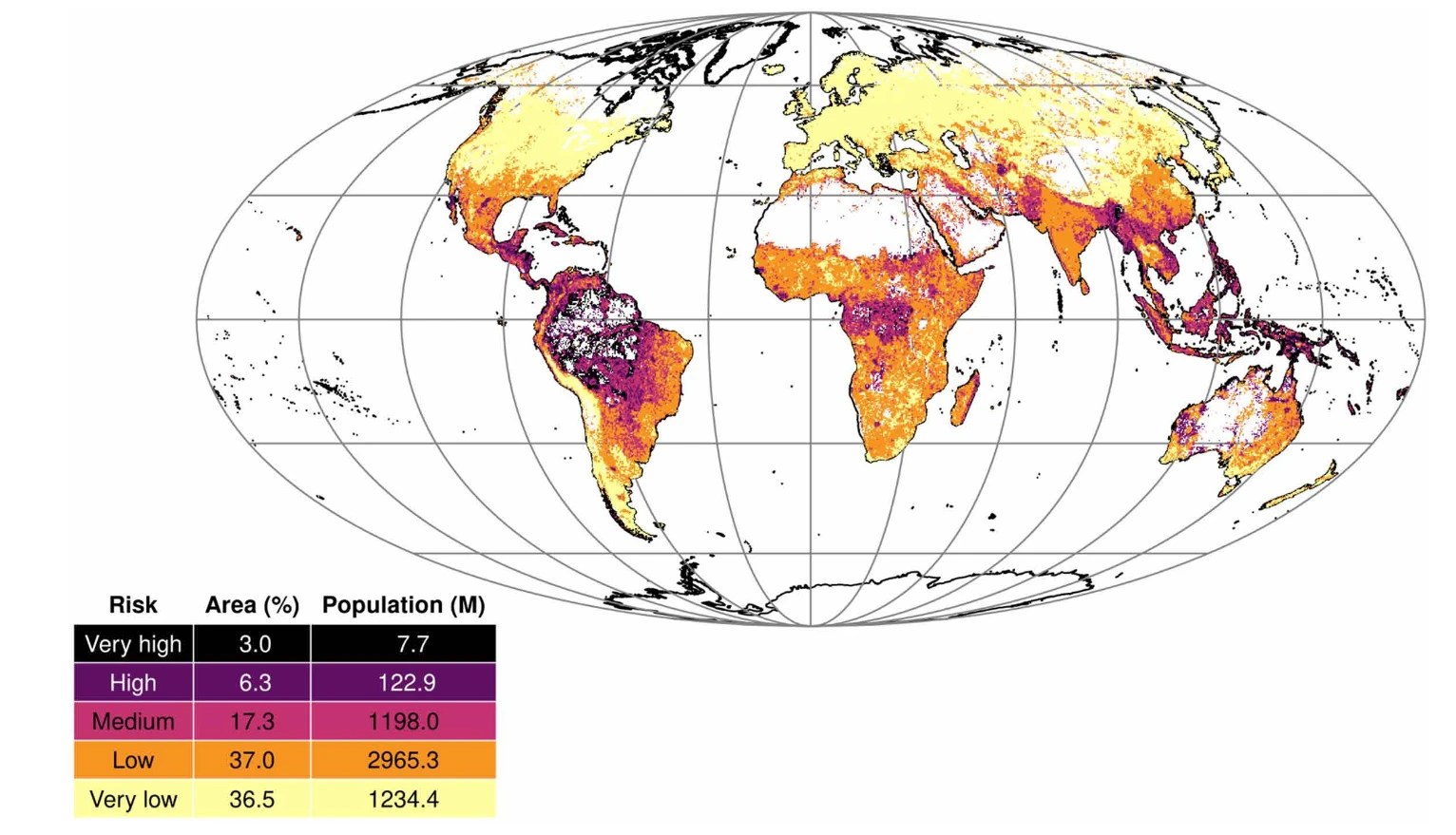Context
A recent study published in Science Advances (July 2025) reveals that over 9% of the world’s land area is at “high” or “very high” risk of zoonotic outbreaks—infections that transmit from animals to humans. The findings, based on geospatial disease and population data, highlight significant public health vulnerabilities, especially in ecologically disturbed and densely populated areas.
What Are Zoonotic Diseases?
- Zoonoses are diseases caused by pathogens that transmit from animals to humans, and sometimes vice versa.
- Examples: COVID-19, Ebola, Nipah, Avian Influenza, Rabies, etc.
- About 75% of emerging infectious diseases in humans have animal origins.
Key Findings of the Study
- 9% of global land area is at high/very high risk of zoonotic transmission.
- 3% of the global population lives in areas classified as extremely high-risk.
- 20% of the population resides in medium-risk zones.
- Based on data from:
- Global Infectious Diseases and Epidemiology Network (GIDEON)
- WHO’s list of priority pathogens with pandemic potential.

Geographical Hotspots
Although the study is global in scope, South Asia, Sub-Saharan Africa, parts of Latin America, and Southeast Asia stand out as high-risk zones due to:
- Dense human and animal interaction
- Wildlife trade and consumption
- Deforestation and habitat encroachment
- Inadequate surveillance systems
Causes of High Zoonotic Risk
|
Factor |
Description |
|
Habitat loss |
Deforestation and urban sprawl increase human-animal contact. |
|
Climate change |
Alters animal migration and disease vector patterns. |
|
Agricultural expansion |
Brings livestock and humans closer to wildlife habitats. |
|
Wildlife trade |
Increases cross-species disease transmission risks. |
|
Weak health systems |
Inadequate detection, reporting, and response mechanisms. |
Significance for India and the World
Public Health Preparedness
- India has previously witnessed outbreaks like Nipah virus, avian flu, and COVID-19.
- Zoonotic risks are not just health issues—they threaten livelihoods, biodiversity, food systems, and economic stability.
One Health Approach
- Emphasizes interconnection between human, animal, and environmental health.
- Promoted by WHO, FAO, UNEP, and implemented in India's National One Health Mission (under development).
Sustainable Development Goals (SDGs) Impacted
- SDG 3: Good Health and Well-being
- SDG 13: Climate Action
- SDG 15: Life on Land
Conclusion
The study's findings serve as a critical warning signal: the next pandemic could be brewing in one of these high-risk zones unless swift and systemic measures are taken. For India, the implications are especially urgent given our dense population, biodiversity, and rapid urban expansion. Strengthening a One Health ecosystem is not optional—it’s imperative.






